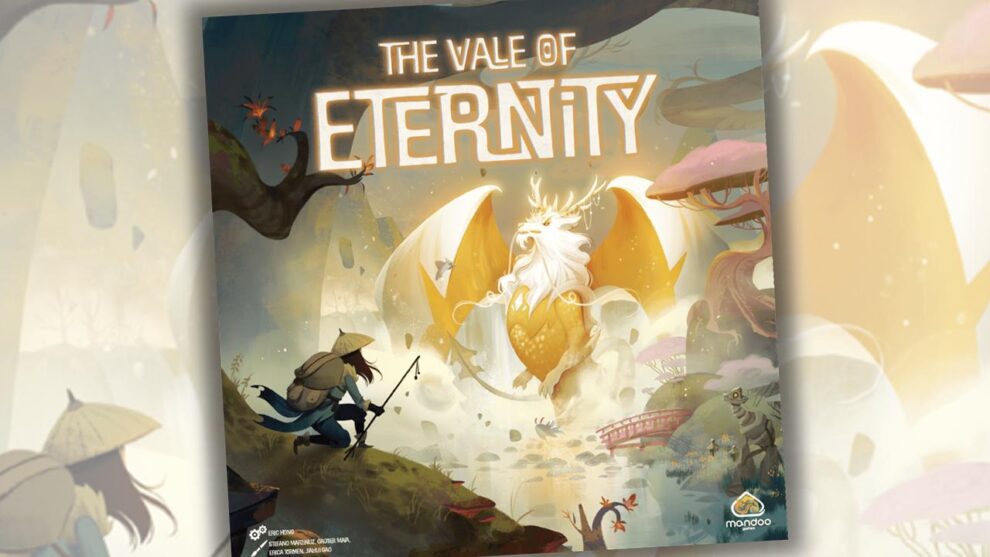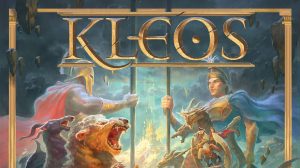Disclosure: Meeple Mountain received a free copy of this product in exchange for an honest, unbiased review. This review is not intended to be an endorsement.
As a part of our continuing efforts to cover every game in the BoardGameGeek’s list of the top 500, I raised my hand to check out The Vale of Eternity (2023, Renegade Game Studios). The game has a lot of very attractive news and notes on the box: 45-minute play time, a short rulebook, great artwork from a pool of artists and a quick drafting system used to support muggle-friendly, tableau-building mechanics.
I watched a short teach video and got my wife to play The Vale of Eternity the day it arrived on my doorstep. I was curious to see what she thought after that first play.
“I liked it,” she reported in a game that was close right until the eighth and final round of the game. “It was certainly easy to understand, and these cards give it some nice depth.”
This is why I married her—we agree on so many games, even when we come at the result from different perspectives. The Vale of Eternity is a great way to introduce other casual players to a short, open drafting card game where every card is unique.
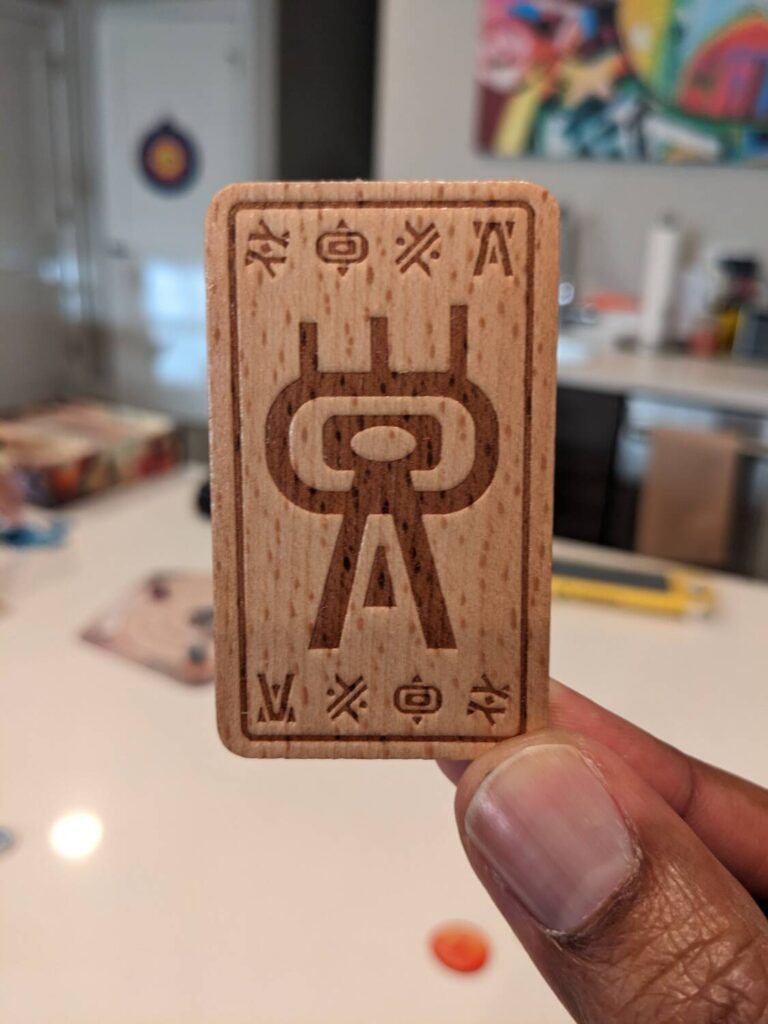
“That Combo Feels Broken”
Across four plays of The Vale of Eternity—at two and three players in person, then two and four players using the implementation on Board Game Arena—I always came away saying roughly the same thing: The Vale of Eternity wins points because it is so fast…and because the combos all feel broken.
Regular readers know that if I had to pick between “meh, this unique card is only OK” and “whoa, this card does WHAT when played with XYZ card??”, I’m always taking the latter. Recently, I have played games with unique cards, like Finspan, where I wondered why some of the cards were even included because the combos never materialized.
Not so in The Vale of Eternity. On their own, some cards look like they might be ordinary. But the second they are played with another card that triggers an ability, things change real quick-like. Players must draft cards from one of five card families, then play them to the table using a very tight monetary system where players can sell cards for “Magic Stones.” Later, players must spend stones to “summon” cards from their hand. The cards range in cost from 0-10+ stones, but players can only have four unique stones in their possession at any time.
Here’s the hook—those stones only come in denominations of ones, threes, and sixes. When summoning cards to the table, playing a value five card by paying for it with a value six stone means you don’t get any change. If you ever earn more than four stones at once, you only get to keep a maximum of four stones by the end of the transaction. That means cash—whoops, stones!—is real tight. And I like my money tight when it comes to in-game economies.
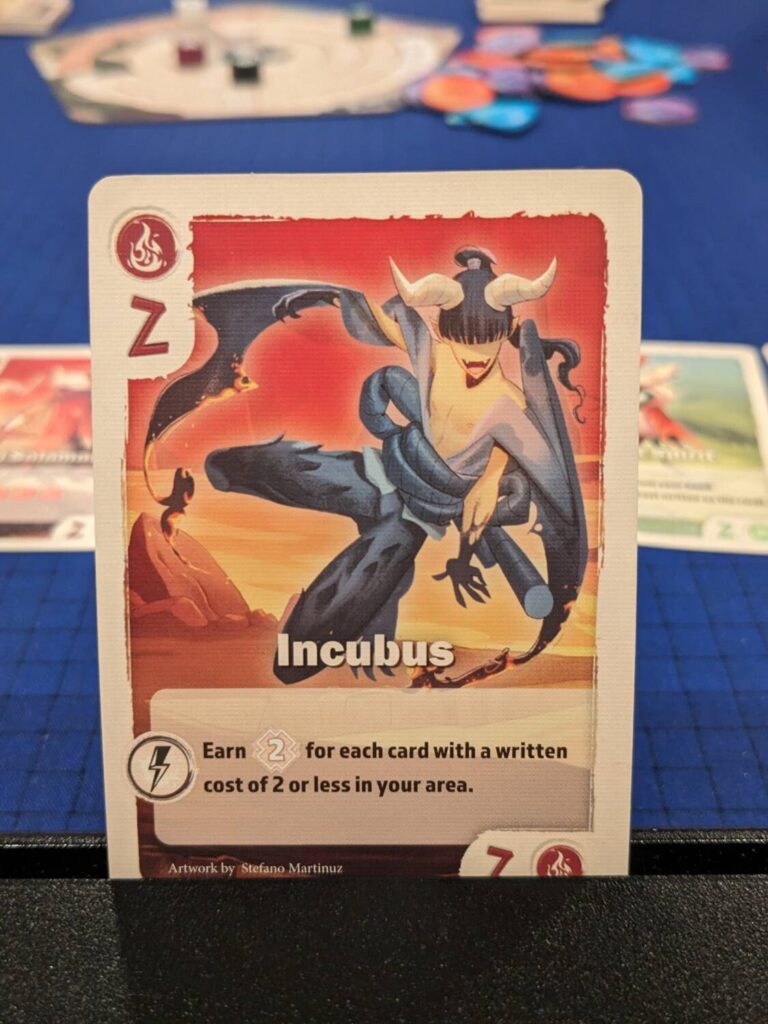
The cards are silly stuff—monsters, gods, very ordinary fare. Yes, there’s a Medusa card. Of course, there is an Eternity card. I didn’t mind the lack of creativity with these cards because I’m not spending much time talking about the flavor text. (However, some of the pictures are cute, while others are scary. I didn’t dwell on the images, but I appreciated the mix of ideas.)
Where the cards get interesting are the powers. Some cards grant instant effects; others grant ongoing powers. Again, nothing world-breaking. But as players collect cards, they begin to see the potential of the combos and that’s where The Vale of Eternity really takes off. In the early game, players are scoring a point here, four points there. They are saving up single stones to summon cheap cards, and there’s a limit of played cards equal to or less than the number of the current round (for example, in the fourth round, you can only have a max of four cards in your tableau).
By the game’s fourth or fifth round, someone has probably played a very sexy combo. “Oh, would you look at that…this card gives me three points for every unique card suit in my tableau. That will be 15 points, thank YOU!” And 15 points in a game that signals the endgame when someone crosses 60 points is Kind of a Big Deal.
There are cards that let you remove another player’s cards from their tableau. There’s a card, the Goblin, that lets you steal one point from an opponent each round. On its own? Garbage. But if that’s the first card you play, that might net eight or nine points over the course of the game, and make everyone at the table hate you. (It’s all about the bonuses.) The purple suit, Dragon, has a lot of expensive cards, but they are usually worth the wait if you can collect the right combo of stones to summon them. Some cards let you take played cards back into hand to be played again, and likely score a larger point total when repeatedly replayed.
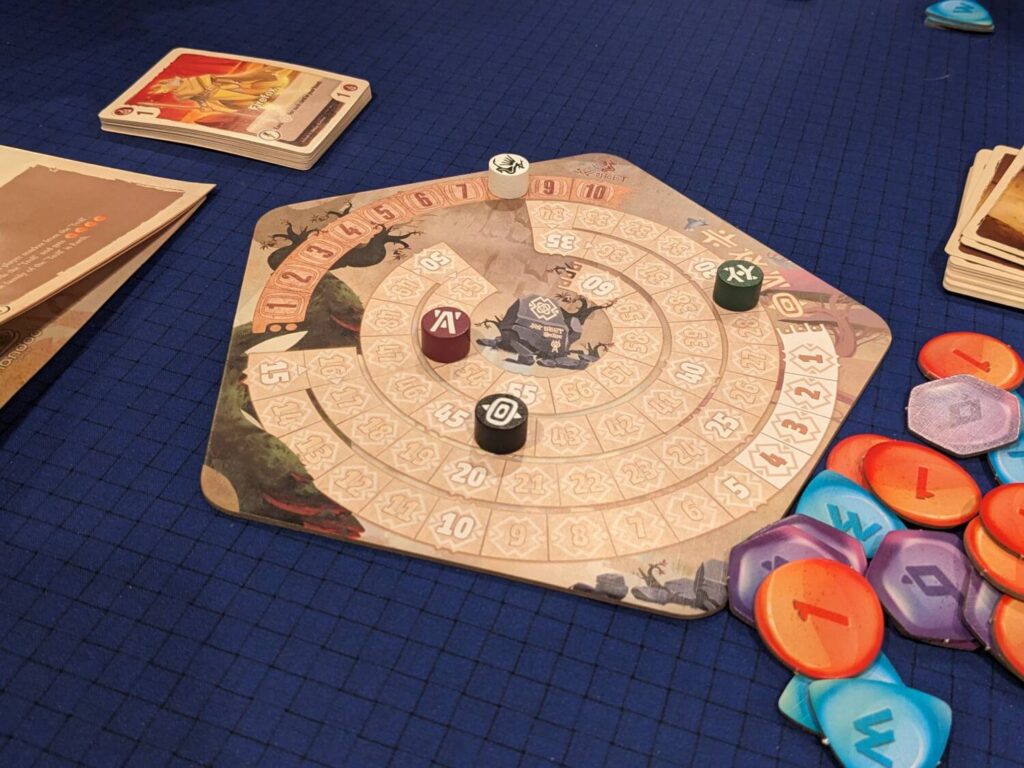
A Long Filler for the Tableau-Building Junkie
This is all to say that while I thought The Vale of Eternity was good, it was never mind-blowing. And that is absolutely fine by me. I see why the game ranks in the top 500 now that I have tried it, it is a game with “high tableability.” The combos are sick, and everyone has their hands on a sweet combo or two for their points engine by the end of the game. The game could go as long as ten rounds, but only one of my four plays went past the eighth round. The Vale of Eternity is highly tactical, so people who are unwilling to sit through a two-hour-plus game where you’ve got to stare deep into the card text to figure out your strategy will feel right at home here.
The drafting system here is quick, although a negative surfaces during a three- or four-player game: there’s a decent amount of text on some cards, so when cards are added to the display/auction area, all players need to read as many as eight cards in a four-player game before anyone can start drafting. When players are sitting at different points around a table, there’s no easy way to make the cards readable to everyone at once, leading to a brief moment where the first player (who drafts first, then last) has to really consider their options.
That’s one of the reasons why I recommend The Vale of Eternity as a two-player game. Lightning fast. Essentially zero downtime, both during the draft and during each turn. Some of those sweet combos are muted because there may be fewer players to attack with some of the negative effect cards (of which there are only a few anyway).
But for a person who prefers heavier fare with open drafting games (Ark Nova comes to mind, in a package that takes at least four times as long to play), I like what The Vale of Eternity is going for, especially for a price that comes in at about $30. I don’t expect to play The Vale of Eternity regularly, so I’m glad it is available on BGA if I need a quick fix—and one of my online games with four players took just 40 minutes.
If light tableau builders are your jam, and you have a group that leans casual, The Vale of Eternity is absolutely worth a look.


